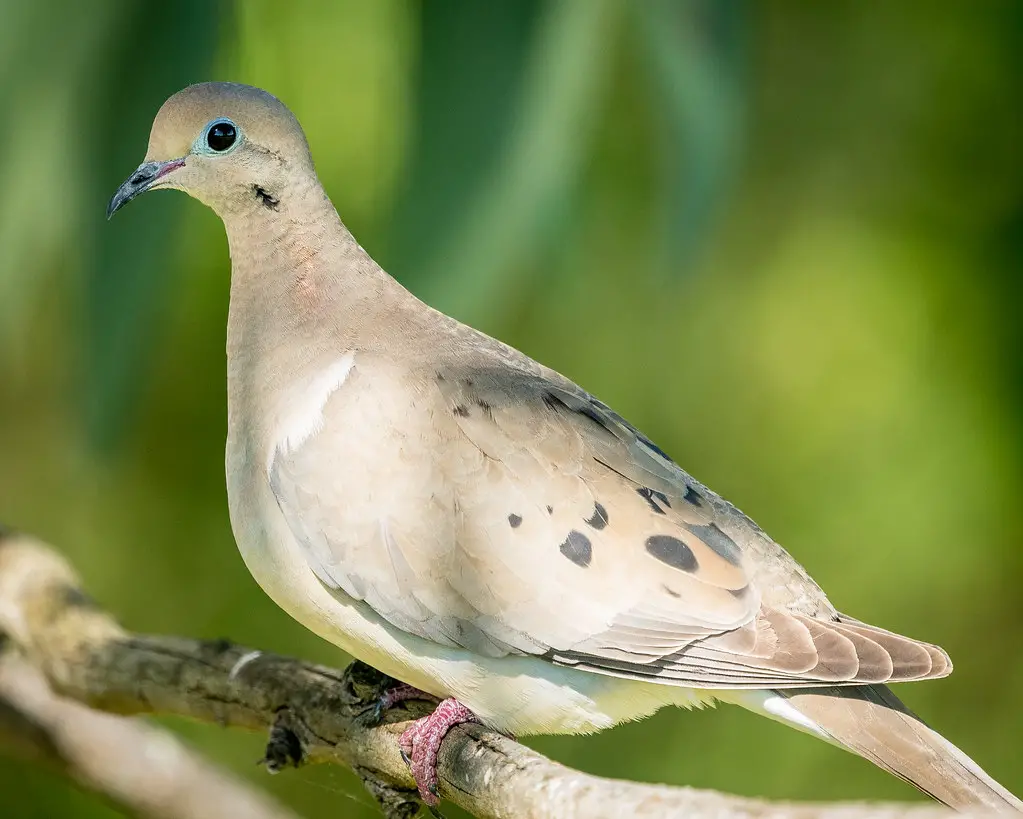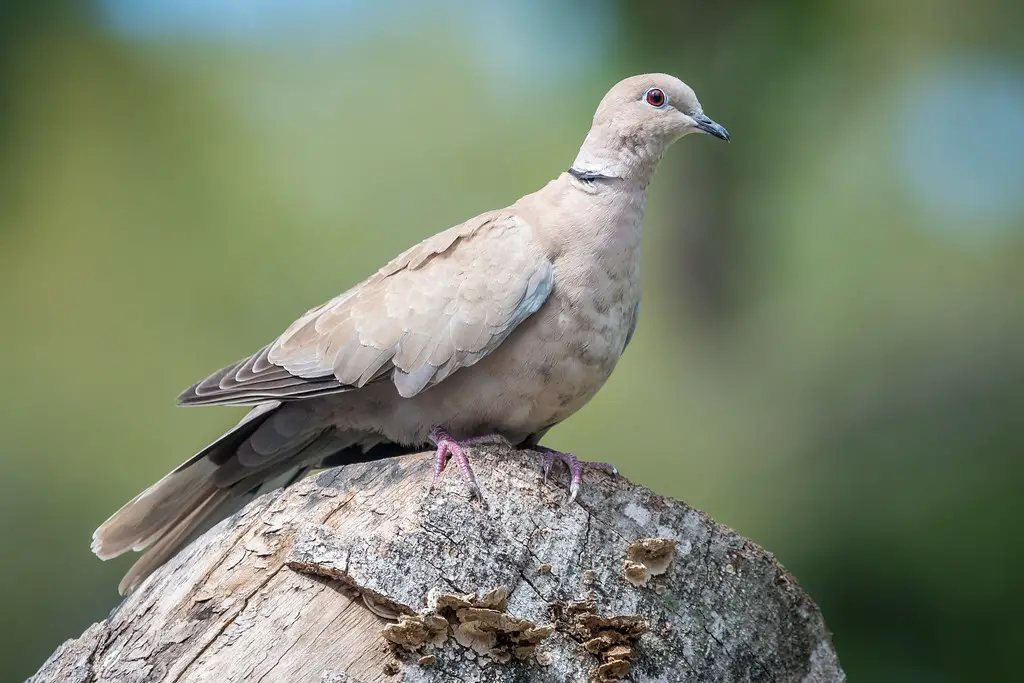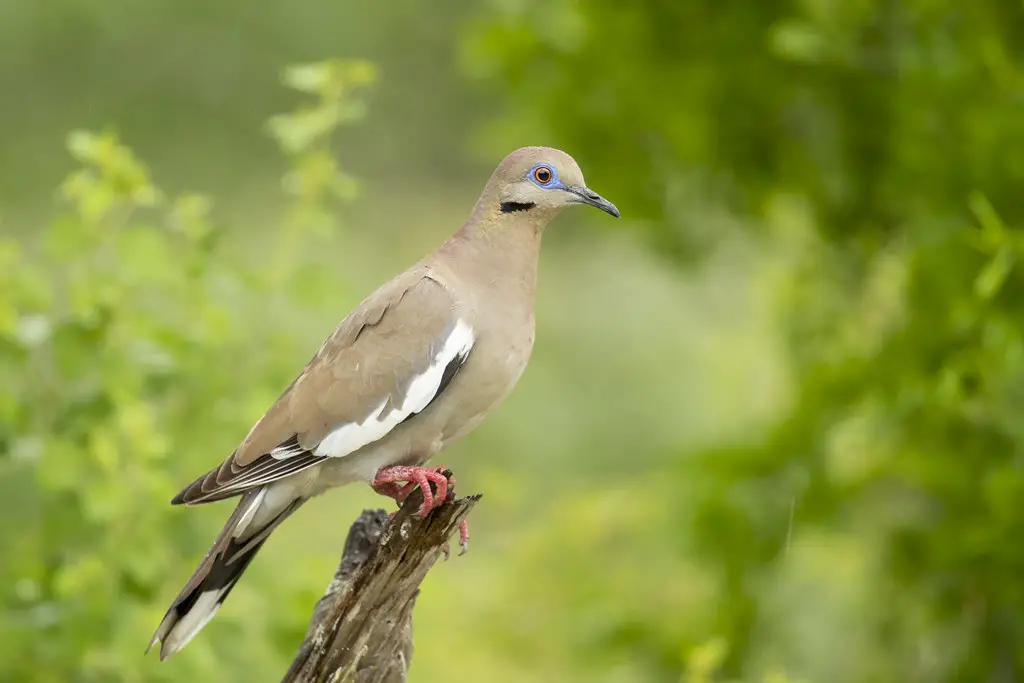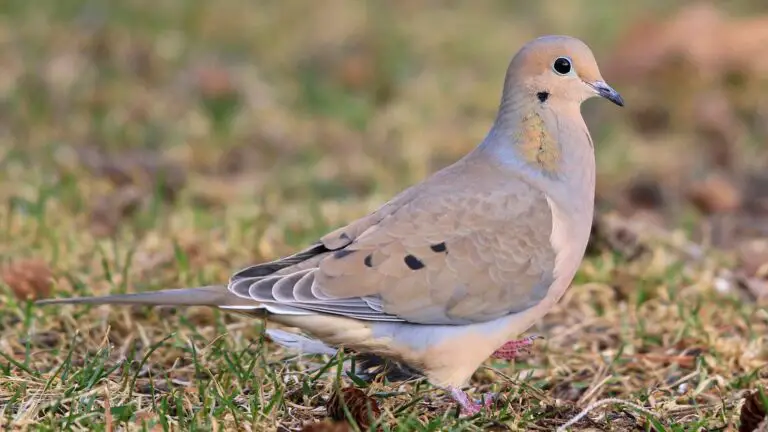New York, often associated with the hustle and bustle of city life, also boasts a diverse and vibrant natural world. Amidst the skyscrapers and urban centers, doves, with their gentle cooing and elegant presence, have found a place in the hearts of both city dwellers and rural residents. In our exploration of doves in New York, we’ll discover the types of doves that grace the state, their unique behaviors, and the role they play in the Empire State’s diverse ecosystem. Whether you’re a dedicated birder or simply curious about New York’s avian inhabitants, let’s delve into the captivating world of doves in New York.
Types of Doves in New York:
- Mourning Dove
- Rock Pigeon
- Eurasian Collared-Dove
- White-winged Dove (Rare)
Mourning Dove

Image Source
- Scientific name: Zenaida macroura
- Lifespan: 2-5 years
- Size: 9-13 inches
- Native to: Southern Canada to central Mexico
The Mourning Dove is predominantly gray in color and possesses unique features including sizable black spots on its wings, an elongated slender tail, pinkish legs, a black beak, and a prominent blue ring around its eye. Interestingly, males and females of this species have the same appearance.
In New York, the Mourning Dove is not only common but also quite familiar. Frequently, you can observe them perched at elevated positions in trees or on telephone wires in the vicinity of your residence. They are also commonly sighted on the ground, where they primarily engage in feeding activities.
Mourning Doves are commonly observed at bird feeding stations, where they often visit for food. To attract them, consider offering their favorite foods, which include millet, shelled sunflower seeds, Nyjer seeds, cracked corn, and safflower seeds. These doves prefer flat feeding surfaces, so trays or platforms make excellent feeders. They are quite comfortable feeding on the ground as well, so providing food there is a good idea.
These doves are highly prolific in their breeding habits. Female Mourning Doves frequently produce 3 to 6 broods during each breeding season. Although the young doves spend a maximum of 15 days in the nest, they remain in close proximity to their parents, who continue to feed them for about another week. It’s a common misconception for people to think that these young doves have fallen out of the nest, as they can barely fly. However, they may not realize that their parents are nearby, ensuring their sustenance.
Regarding their vocalizations, Mourning Doves are renowned for their unique low cooing sound, which can be described as “coo-ah, coo, coo, coo.” This mournful sound is the origin of the dove’s name and is sometimes confused with the call of an owl by many residents of New York.
Rock Pigeon

Image Source
- Scientific name: Columba livia
- Lifespan: 6 years
- Size: 11-13 inches
- Native to: Europe North Africa and India, it now lives in wild or semi-wild conditions in cities all over the world, including most of North America
The Rock Pigeon is a plump bird known for its small head, short legs, and thin bill. While the typical pigeon has a gray back, a blue-grey head, and two black wing bars, their plumage can vary significantly. It’s not uncommon to see pigeons with all-white or rusty-brown feathers.
In New York, Rock Pigeons are extremely common, but you’ll primarily find them in urban areas. These birds are commonly referred to as “pigeons.” You’ve likely seen them in large flocks gathering in city parks, hoping to find birdseed or leftover food.
Rock Pigeons are quite easily attracted to bird feeders, particularly if there’s leftover food on the ground. However, their high numbers can sometimes make them a bit of a nuisance in your backyard. A lot of individuals might feel overwhelmed by their presence and seek methods to deter them.
When it comes to identifying Rock Pigeons, their distinctive soft, throaty cooing sounds are quite recognizable.
Rock Pigeons have a well-documented history of interaction with humans. There is evidence from Egyptian hieroglyphics that indicates the domestication of these birds began more than 5,000 years ago. Due to this long history, scientists aren’t entirely certain about their original range.
Eurasian Collared-Dove

Image Source
- Scientific name: Streptopelia decaocto
- Lifespan: 3 years
- Size: 12-14 inches
- Native to: Bay of Bengal region (India, Sri Lanka, Myanmar
The Eurasian Collared-Dove is primarily a sandy brown bird with a distinctive long, square-tipped tail. As its name suggests, you can identify it by the black collar on the back of its neck.
In New York, Eurasian Collared-Doves are considered invasive. Regrettably, in the 1970s, an individual introduced them to the Bahamas, and since that time, their numbers have increased quickly. They continue to spread even today.
One reason for their rapid colonization is their comfort around humans. They have thrived in proximity to bird feeders and in urban and suburban areas. It’s common to spot them on the ground or platform feeders, where they feed on grains and seeds.
When it comes to their song, listen for a “koo-KOO-kook” sound, which both males and females produce. Notably, their song has a distinct pattern where the middle syllable is longer than the first and last ones. Male doves often sing louder when they are defending their territory or trying to attract a mate. To distinguish Eurasian Collared Doves from Mourning Doves, there are some key differences. Mourning Doves are smaller in size and feature black dots on their wings, whereas Eurasian Collared-Doves are larger and have a distinctive black crescent-shaped collar around their necks.
White-winged Dove

Image Source
- Scientific name: Zenaida asiatica
- Lifespan: 10-15 years
- Size: 11 in
- Native to: Southwestern United States through Mexico, Central America, and the Caribbean
Now, turning our attention to the White-winged Dove, this bird is characterized by its pale grayish-brown plumage, and it stands out due to a noticeable white stripe along the edges of its wings. It also features a short, square-tipped tail and a noticeable black mark on its cheek.
White-winged Doves have adapted quite well to human presence, making them a common sight in cities and backyards throughout New York. They readily frequent bird feeding stations that offer sunflower seeds, safflower seeds, milo, and cracked corn as food options.
Similar to other dove species, White-winged Doves have some interesting characteristics. When their nestlings are born, the parents feed them something called “crop milk,” which is a secretion regurgitated from the lining of the esophagus. Additionally, pigeons and doves have the unique ability to drink water while their heads are down, meaning they don’t need to tilt their heads upward to swallow, a trait uncommon among birds.
In their courtship rituals, male White-winged Doves sing to attract females. They produce a series of hooting coos, which can sound like they are saying, “Who cooks for you.” Often, the final coo in their sequence is longer than the rest.
Final thoughts on Doves in New York
Doves in New York, despite the urban hustle and bustle, contribute a touch of elegance and serenity to the state’s diverse natural and urban landscapes. These gentle birds, with their soothing coos and graceful presence, are not just avian residents; they are an integral part of New York’s rich tapestry. Through our exploration of the various aspects of doves in the Empire State, from the species you can encounter to their unique behaviors, it’s evident that they hold a special place in the hearts of bird enthusiasts and city dwellers alike.


![5 Types of Doves in Louisiana [Images + IDs]](https://birdsology.com/wp-content/uploads/2023/09/51966837857_e62c6fbc37_b-600x400.jpg)
![8 Species Of Hawks In Maryland [Images + Ids]](https://birdsology.com/wp-content/uploads/2023/03/26566697545_31bbfc052c_b-600x400.jpg)
![17 Stunning Green Birds In Florida [Images + IDs]](https://birdsology.com/wp-content/uploads/2023/02/38-600x400.jpg)
![10 Species Of Hawks In North Dakota [Images + Ids]](https://birdsology.com/wp-content/uploads/2023/02/WhatsApp-Image-2023-02-28-at-11.31.52-PM-600x400.jpeg)